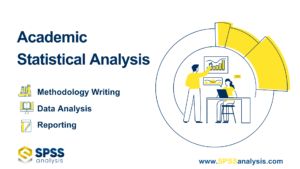Meta Analysis in Clinical Research
Need an Expert for Meta Analysis in Clinical Research?
We specialise in clinical research meta-analysis, offering end-to-end support for PhD candidates, academics, and researchers. From effect size calculation to full statistical reporting, our team delivers tailored solutions using SPSS, R, Stata, CMA, and more—regardless of the deadline or complexity.
How Our Meta-Analysis Service WorksA clear 3-step process to guide you from research planning to final statistical reporting—tailored to clinical researchs and health sciences.
Meta-Analysis in Clinical Research: A Complete Guide for Researchers
Meta-analysis plays a critical role in clinical research by combining results from multiple studies to provide stronger evidence on treatment efficacy, diagnostic accuracy, or risk factors. This statistical approach enhances precision, increases generalisability, and helps clinicians make evidence-based decisions. In a field where single studies often yield conflicting results, meta-analysis offers clarity by synthesising available data into actionable insights.
What Does Meta-Analysis Mean in Clinical Research?
In clinical research, meta-analysis refers to the process of statistically combining results from independent studies that address the same clinical question. By pooling data, researchers can calculate an overall estimate of effect size, such as the effectiveness of a treatment or the risk associated with a medical exposure. This methodology is particularly valuable in evaluating interventions, comparing outcomes, and informing clinical guidelines.
How Is Meta-Analysis Used in Clinical Research?
Meta-analysis is widely used in clinical settings to summarise evidence and improve patient care. Common applications include:
Evaluating drug efficacy or treatment outcomes
Comparing diagnostic tools or surgical procedures
Assessing adverse effects or mortality risk
Supporting guideline development or regulatory decisions
By integrating findings from multiple trials, meta-analyses help overcome sample size limitations and provide more reliable conclusions than individual studies alone.
What Are the Types of Meta-Analysis in Clinical Research?
Depending on the research objective and data structure, several types of meta-analyses are used in clinical research:
Traditional Meta-Analysis: Combines effect sizes from published studies using aggregate data.
Individual Patient Data (IPD) Meta-Analysis: Pools raw data from individual participants across studies for deeper subgroup or time-to-event analysis.
Network Meta-Analysis: Allows comparison of multiple interventions simultaneously, even if direct head-to-head studies are lacking.
Cumulative Meta-Analysis: Updates effect size estimates over time as new studies are published.
Bayesian Meta-Analysis: Integrates prior information to estimate probabilities and uncertainties around treatment effects.
Key Concepts You Need to Know Before Starting a Meta-Analysis
Before beginning a meta-analysis in clinical research, researchers must understand foundational concepts that influence design, analysis, and interpretation. These include:
- Systematic Review: A rigorous process for identifying, evaluating, and summarizing all relevant research.
- Fixed vs. Random Effects Models: Fixed-effect assumes a common true effect; random-effects allow for study-level variability.
- Effect Size: A standardized measure (e.g., Cohen’s d, Hedges’ g) quantifying the strength of an effect.
- Heterogeneity (I², Q-test): Indicators of variability among study results.
- Forest Plot: A graphical display of individual and combined effect sizes.
- Funnel Plot: Used to detect asymmetry and publication bias.
- Subgroup Analysis: Assesses effects within defined subgroups.
- Publication Bias Analysis: Tests (e.g., Egger’s test) and corrections (e.g., trim-and-fill) to address biased reporting.
Understanding these elements is critical for designing a robust and transparent meta-analysis.

What Are the Assumptions of Meta-Analysis?
Meta-analysis relies on several statistical and methodological assumptions. Violating these can lead to biased or invalid results. Key assumptions include:
- Studies included are sufficiently similar (conceptually and methodologically)
- Effect sizes are independent
- Measurement tools and outcomes are comparable
- Data are normally distributed (for some models)
Researchers should test for heterogeneity and conduct sensitivity analyses to check the robustness of their findings.
How Is Meta-Analysis Data Collected in Clinical Research?
Collecting high-quality and consistent data is essential. The typical workflow includes:
Define clinical question and eligibility criteria
Search databases such as PubMed, Cochrane Library, Embase, and clinical trial registries
Screen titles, abstracts, and full texts
Extract relevant data: sample sizes, effect measures, confidence intervals, study design, patient population
Assess risk of bias using standard tools (e.g., Cochrane RoB 2)
Documentation of inclusion/exclusion criteria and data sources ensures transparency and reproducibility.
What Is the PRISMA Flow Diagram in Meta-Analysis?
The PRISMA (Preferred Reporting Items for Systematic Reviews and Meta-Analyses) flow diagram is a standardized tool for documenting the study selection process. It enhances transparency and replicability by clearly showing how studies were identified, screened, and included or excluded.
The flow diagram typically includes four stages:
- Identification: Total records found via database searching and other sources
- Screening: Records excluded after title/abstract screening
- Eligibility: Full-text articles assessed and excluded with reasons
- Included: Final studies included in the meta-analysis
Using a PRISMA diagram ensures clarity in reporting and helps readers assess the rigor of your review process.
Common Challenges in Conducting Meta-Analysis in Clinical Research
Conducting a high-quality meta-analysis in clinical settings comes with several challenges:
Heterogeneity in patient populations or interventions
Incomplete reporting of outcomes
Publication bias and selective reporting
Varying follow-up durations or outcome definitions
Data access limitations for IPD meta-analyses
Addressing these challenges often requires subgroup analyses, sensitivity testing, and rigorous risk-of-bias assessment.

How to Calculate Effect Sizes for Meta-Analysis in Clinical Research
Effect sizes are the core building blocks of any meta-analysis. In Clinical research, different types of effect sizes are used depending on the nature of the outcome data:
- Cohen’s d or Hedges’ g: For mean differences between two groups.
- Odds Ratio (OR) or Risk Ratio (RR): For binary outcomes (e.g., treatment success vs. failure).
- Correlation Coefficients (r): For associations between continuous variables, often transformed to Fisher’s Z.
These metrics can often be calculated from means, standard deviations, t-values, p-values, or proportions. SPSS, R, and online calculators can assist with computation when raw data are not available.
Strengths and Weaknesses of Meta-Analysis
Meta-analysis offers several advantages but is not without limitations. Understanding both is key to appropriate interpretation.
Strengths:
- Increases statistical power
- Provides a comprehensive evidence summary
- Identifies patterns and moderators
- Supports theory refinement and policy decisions
Weaknesses:
- Susceptible to publication and selection bias
- Relies on the quality of included studies
- Results can be misleading if heterogeneity is ignored
- Risk of overgeneralization
Meta-Analysis Checklist for Clinical Researchers
A well-planned meta-analysis follows a structured workflow. This checklist ensures methodological rigor:
Use this checklist to ensure a high-quality meta-analysis:
Define a focused clinical question (PICO format)
Register the review protocol (e.g., PROSPERO)
Perform comprehensive database search
Apply clear inclusion/exclusion criteria
Extract and code study-level data
Assess risk of bias
Choose the appropriate model (fixed vs. random)
Test and report heterogeneity
Perform publication bias analysis
Create forest and funnel plots
Report results according to PRISMA and CONSORT
Interpret clinical and statistical significance
Meta-Analysis vs Systematic Review: Key Differences
While often used together, meta-analysis and systematic reviews serve different purposes:
| Feature | Meta-Analysis | Systematic Review |
|---|---|---|
| Focus | Quantitative synthesis | Comprehensive literature overview |
| Outcome | Pooled effect size | Narrative summary or tabular synthesis |
| Tools Used | Statistical software | Review protocols and screening tools |
Systematic reviews are often the precursor to a meta-analysis, which applies statistical techniques to the selected studies.
Why Is Meta-Analysis Important in Clinical Research?
Meta-analysis improves evidence synthesis by increasing the sample size, reducing uncertainty, and generating clinically meaningful results. It supports decision-making in areas like drug approvals, treatment recommendations, and clinical practice guidelines. In a field where health outcomes are at stake, reliable summaries of evidence are indispensable.

What Statistical Software Can Be Used for Meta-Analysis?
Several statistical programs are available for conducting meta-analyses in clinical research. These include:
- SPSS (using macros such as MetaES or MetaReg)
- R (e.g.,
metafor,meta, androbumetapackages) - RevMan (Cochrane Collaboration tool)
- Comprehensive Meta-Analysis (CMA)
- Stata (with
metan,metareg, etc.)

The choice of software depends on familiarity, complexity of analysis, and need for advanced features like robust variance estimation.
How to Report Meta-Analysis Results
Use guidelines like PRISMA, CONSORT, and Cochrane Handbook to report results. Include:
PRISMA flowchart
Forest plot with effect sizes and confidence intervals
Heterogeneity statistics (Q, I²)
Subgroup or sensitivity analyses
Publication bias detection (funnel plot, Egger’s test)
Clear interpretation of both statistical and clinical significance
Clarity, transparency, and reproducibility are key. Tables, visuals, and detailed methodological descriptions enhance credibility. You can also visit PubMed for detailed guidance.
Why You Should Get Expert Help for Meta-Analysis
Meta-analysis requires both statistical expertise and domain knowledge. Getting professional support can save time and improve accuracy. Here’s why:
- Complex calculations (e.g., converting metrics to effect sizes)
- Risk of errors without proper heterogeneity testing
- Correct model selection (fixed vs. random effects)
- Use of specialized software and macros
- Publication-ready formatting and adherence to APA/PRISMA standards
At spssanalysis.com, we specialize in helping clinical researchers perform high-quality meta-analyses with confidence.
Getting Help for Meta-Analysis
Need expert assistance with your meta-analysis writing? Whether you’re conducting a dissertation, journal submission, or grant-funded research, spssanalysis.com provides end-to-end support:
- Study selection and data extraction
- Effect size computation
- Statistical analysis (SPSS, R, CMA, Stata)
- Forest plots, publication bias tests
- Full APA-style results and discussion sections
Contact us today to get a FREE quote or discuss your project needs. Let us help you bring your clinical research to publication-ready standards.
Further Support for Your Dissertation and Analysis
If you are conducting a meta-analysis as part of a clinical research study or research project, you may benefit from specialised support across other key areas of your study. Our expert team offers tailored assistance for various branches of clinical research and stages of academic research:
Explore these resources to ensure every aspect of your dissertation is supported—from research design to results interpretation.
Follow us on Linkedin





